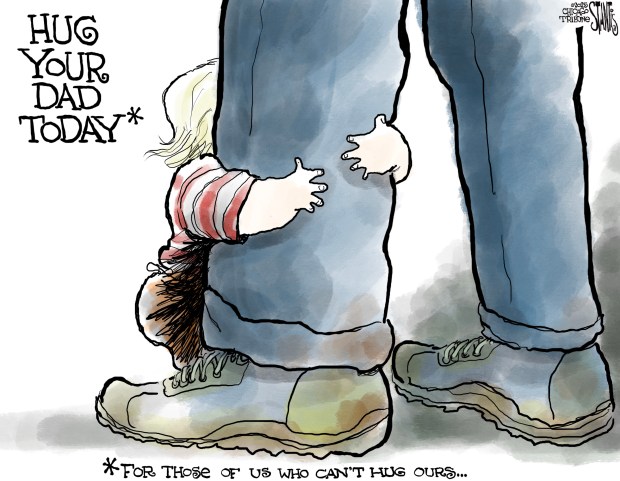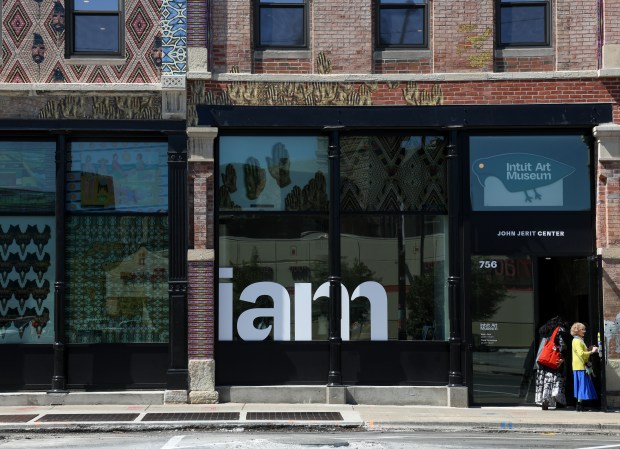If Helen of Troy’s face launched a thousand ships, Kate Middleton’s face, fingers and arms launched a thousand analyses of the perils of technology. And most of them missed a more important warning about the news you consume.
The doctored photo of the Princess of Wales was a full-blown public relations disaster for the British royal family. But, with Election Day in Illinois on Tuesday, imagine these more local hypotheticals.
A faked police report showing a domestic violence charge. A phony photo of a candidate at a Gaza cease-fire rally with antisemitic signs. A photo of a liberal Democrat with arms around a MAGA Republican. Video of a candidate calling for “completely open borders” or an audio file of a pro-abortion rights candidate uttering anti-abortion rights sentiments, claiming she can’t be honest in public.
If the Kate Middleton kerfuffle stands for anything, it’s that technology can easily produce such deceit and that you won’t find out nearly as quickly as you did with Middleton.
Armies of reporters cover the royal family. But increasingly fewer journalists cover anything in your backyard. Every week brings new layoffs. At NewsGuard, which does nonideological credibility assessments of news sites, podcasts and TV news shows, we see the daily drip, drip, drip of diminished outlets.
We are so conscious, too, of the growth of misinformation that we started a free Reality Check weekly newsletter and created a 2024 Elections Misinformation Tracking Center to monitor misinformation as voters in the U.S., the European Union and other countries head to the polls.
For example, NewsGuard disclosed a bogus TikTok video in which former President Barack Obama — in a voice exactly like his — is shown defending himself against a conspiracy theory involving the death of his former chef.
Now consider that the U.S. lost more than 130 newspapers, or 2.5 a week, last year, the Medill School of Journalism at Northwestern University reported. Since 2005, that toll is nearly 2,900 newspapers and 43,000 journalists.
Tim Franklin, senior associate dean at Medill, noted that the school’s researchers characterize 200 U.S. counties as “news deserts,” meaning “a community, either rural or urban, with limited access to the sort of credible and comprehensive news and information that feeds democracy at the grassroots level.”
The ongoing decline “has drastically reduced reliable local news coverage of communities across the country,” said Franklin, former top editor of major daily newspapers in Indianapolis; Orlando, Florida; and Baltimore. “And it fuels a wildfire of misinformation and disinformation in areas where there are few local journalists remaining.”
“The reality is that most understaffed local news outlets simply won’t have the expertise or manpower to figure out that a fairly sophisticated photographic or video fake is indeed a fake,” said David Friend, a Highland Park native and photography expert who is editor of creative development at Vanity Fair. “And, if they do, their detective work may not be completed in a timely fashion. The damage may already be done.”
“Technology that allows for deepfakes and disinformation requires campaigns and news agencies to be vigilant,” said Aviva Bowen, a Chicago Democratic consultant. “Smaller or local efforts won’t necessarily have the capacity or expertise to do this, making it even more important for the media platforms that host these images to put in place responsible policies to prevent not just defamation but dangerous propaganda from spreading.”
Chicago Democratic political strategist Pete Giangreco added: “The big problem with, say, deepfakes is once you get past presidential, U.S. Senate and big state gubernatorial races, the research staff needed to identify and flag fake videos just isn’t there. Like the failure of research on George Santos’ lies, congressional and down-ballot races are particularly at risk. You could imagine school board races running amok with deepfakes.”
Among those shaking their heads over the Middleton mess was Pete Souza, a former Tribune and Sun-Times photographer who is the only person to serve as chief White House photographer for two presidents, Ronald Reagan and Barack Obama.
He knows about fakery at the highest levels. As for the White House itself, “during the Trump administration, they posted official White House photos on Flickr, but then altered them on Facebook, and in advertisements, making Trump’s weight look much less, altering his face, and making his hands bigger and his fingers longer,” Souza said.
Even the mighty Associated Press, with its 3,300 employees, took nearly two hours to determine that multiple things were amiss with the Middleton photo. “How can they not have better enforcement than this”? Souza said.
But imagine how long it would take to unravel a fake election photo in a town without a single journalist, perhaps in one of 200 U.S. counties that Northwestern calls “news deserts.”
Answer: a really long time.
Jim Warren, former managing editor of the Tribune, is executive editor of NewsGuard.
Submit a letter, of no more than 400 words, to the editor here or email letters@chicagotribune.com.




